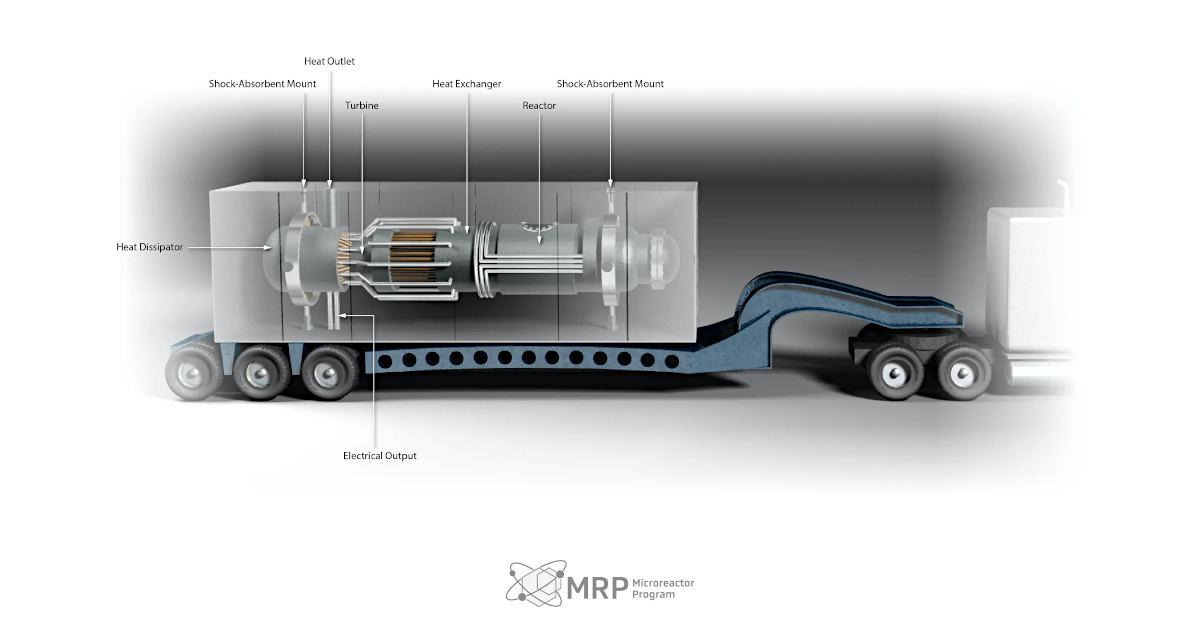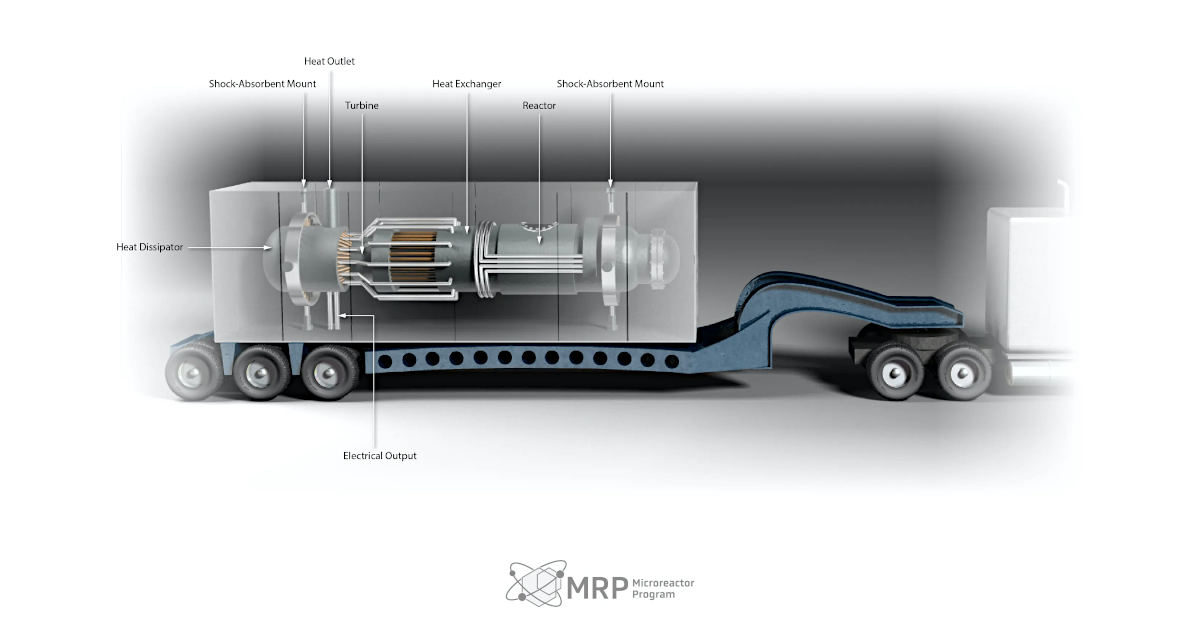The Plug-and-Play Nuclear Battery Solution
“Nuclear Batteries,” or microreactors, is a proposed system that would be able to run unattended for five or ten years, provide heat for industrial processes, or electric production for communities, then be refurbished. The technological progression expected is similar to what computers experienced. Processing power that once filled rooms is now condensed into a handheld device. For nuclear generation, there’s a movement toward relatively tiny and inexpensive factory-built reactors, designed for autonomous plug-and-play. These may one day be conveniently be put into service.
Concept
In a paper published last month titled “A Strategy to Unlock the Potential of Nuclear Energy for a New and Resilient Global Energy-Industrial Paradigm,” a group of nuclear specialists presented a case for nuclear battery (NB) design and production. The idea of smaller modular nuclear reactors has been around for a while, but this proposal takes the idea even further. The authors Jacopo Buongiorno, TEPCO Professor of Nuclear Science and Engineering, MIT – Robert Freda of GE Nuclear – Steven Aumeier, Sr. Advisor for Nuclear Energy Programs at Idaho National Lab – and Kevin Chilton, Ret. Air Force Commander of U.S. Strategic Command, believe units can be made and delivered similar to modular homes. Modular units, fabricated in a factory and placed in a shipping container for delivery and quick installation.
The concept is different than previous proposals of smaller reactors in that NBs are small and complete when they leave the factory. The machines are able to generate approximately 10 megawatts of power and are transportable on one truck or container. This would provide many economic benefits. Nuclear batteries would not require a large construction site, this can eliminate cost overruns. Nuclear power plant construction has been riddled with budget-busting surprise costs for decades. The microreactor is installed quickly, perhaps just a few weeks, and can be looked at as an energy on-demand service. Nuclear batteries would make providing nuclear energy a product, not a mega-project.
Nuclear Battery Advantages
The advantages are easy to understand:
- A single 10-Megawatt NB can power about 7000 – 8000 homes, a mining project, a midsize data center, or produce enough ongoing desalinated freshwater for over 150,000 people.
- Can bring electricity to power most anything with no need for a continuous fuel supply.
- Completely onsite, eliminating the need for long-distance transmission or grid infrastructure.
- Simple design, fully standardized, mass-produced, fueled at the factory with few moving parts.
- They combine a small nuclear reactor and a turbine to supply significant amounts of heat and/or power (on the order of 15–30 MWt or 5–10 MWe) while taking up very little real estate.
- They are compact enough to fit in standard shipping containers for transport to the site of interest, where a unit can be installed and made operational in a matter of days or weeks.
- Embedded intelligence and established advanced monitoring paradigms enable semiautonomous and remotely monitored operation, inherent digital security, and the potential for highly efficient global fleet operational models.
- They use low-enriched uranium fuel.
- “Exhausted” and properly cooled NBs can be safely shipped back to a centralized facility for refueling and refurbishment.
- There is no need for high-level radioactive waste handling or storage at the user site.[3]
The combination of low-enriched fuel, simple design, mass manufacturing, minimal site preparation, and semiautonomous operation is expected to provide an economically competitive system that can be installed fast.
Safety
It’s hard to mention the word nuclear without “safety” coming to mind. The NBs would be designed with three safety functions not requiring operator intervention:
- Rapid shutdown of the fission chain reaction in the event of an unexpected condition.
- Adequate cooling of the nuclear fuel during shutdown.
- No uncontrolled release of materials into the biosphere.
These three features are expected to significantly reduce the possibility of accidents like those experienced at Three Mile Island, Chernobyl, and Fukushima.
Physical security for microreactors would come from a combination of design features like a strong fuel and containment shell and remote monitoring. With cybersecurity as a growing concern, vulnerability could be reduced as the design and build would be such that even a knowledgeable operator would be unable to damage the nuclear fuel or cause a radioactive release. Further, most NB designs under consideration make it physically impossible to cause a runaway reaction.
Public
Companies Involved
There are half a dozen companies developing their own Microreactor designs. These include NucNet, GE Hitachi, Radiant, and BMX Technologies. Westinghouse is working on a design that uses heat pipe technology for cooling. The company plans to run a pilot plant as a demonstration unit at one of the national laboratories in three years. Idaho National Laboratory has a number of facilities that are being modified to accommodate small reactors so they can perform testing on them.
Take-Away
We may be on the brink of a new paradigm for nuclear power.
The number of ways the future may include uranium as a power source is increasing. Add nuclear batteries to the list as they are well suited to provide for the needs of industry and many other sectors of the economy by providing a steady, dependable source of carbon-free electricity and heat that can be located on location where power or heat is needed.
Implementation would be a few years away but demand for uranium is increasing while this and other nuclear projects such as the natrium plant in Montana are becoming a reality.
Suggested Reading:
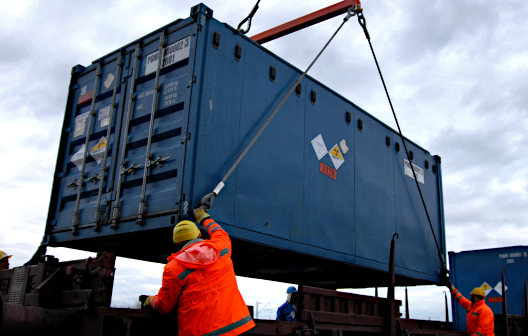 Can You Invest in Uranium Directly?
|
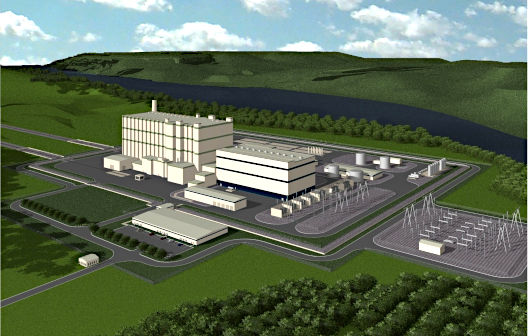 How Does the Gates Buffett Natrium Reactor Work?
|
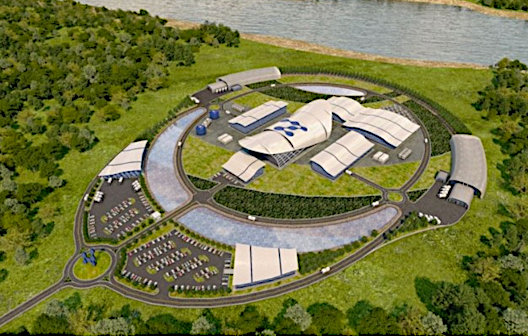 Is the Future of Nuclear Power, Small Modular Reactors?
|
 Energy Industry Report (Q2, 2021)
|
Sources:
https://news.mit.edu/2021/nuclear-batteries-decarbon-0625
https://www.nucnet.org/news/us-defence-department-awards-contracts-worth-usd39-million-3-2-2020
Stay up to date. Follow us:

|
